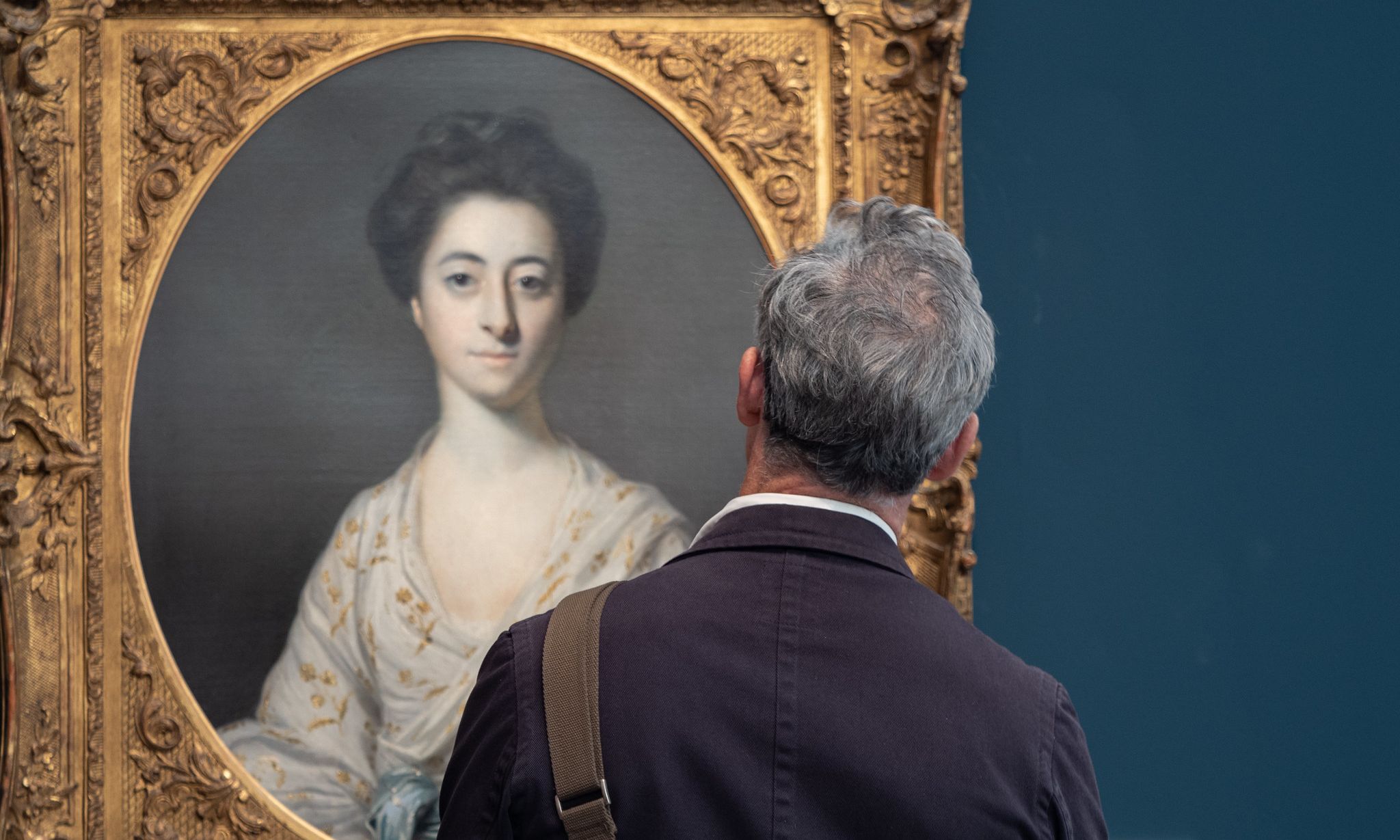A visitor to Frieze Masters 2023
Courtesy of Frieze
“I don’t think I’ve experienced a more difficult time for our art market than now,” said Anthony Browne, the chairman of the British Art Market Federation (BAMF), at a conference yesterday in London. Held for the launch of the British Art Market in 2023 report, authored by cultural economist Clare McAndrew and her research firm, Arts Economics, it aimed to assess how the UK trade has fared since the last comparable survey was conducted six years ago.
The outlook is not as gloomy as one might have feared. Although Brexit—along with Covid-19 and geopolitical tensions—has taken a great toll, the report paints a picture of relative resilience: the UK has managed to cling onto its position as holder of the second largest share of the global art market, accounting for 18%, which represents $11.9bn in aggregate sales in 2022. This is partly due to a sluggish economy in China, which narrowly comes in third—representing 17%.
Greater reasons for concern from a UK perspective are found in comparisons with the world’s dominant market, the US. According to the report, the US bounced back from the pandemic markedly better than the UK: in 2022, the US reached a record peak, and now accounts for 45% of global art market share, while the UK has yet to recover to pre-pandemic levels. This gap appears even starker when looking further back: between 2009 and 2022, UK art sales increased by 33%, compared to a 149% rise in the US and a 54% in China (both mainland and Hong Kong).
A key issue behind this widening gulf is that of imports and exports; McAndrew argues that there is a “strong correlation” between the import and sale of art and antiques. This is because the UK is an “entrepôt” market, meaning that it relies heavily on cross-border trade. As Browne attested: “Long gone are the days when the UK art market relied on the emptying of ducal houses.”
Since Brexit officially came into place in 2020, art and antiques (along with most other cultural goods) entering the UK from the EU are subject to a 5% import VAT and significant red tape. This has hugely impacted cross-border trade: imports to the UK in 2022 were $2.8bn, less than half their level in 2015, the year before the Brexit vote.
Browne has long advocated for scrapping the UK's 5% import VAT for art and antiques, to increase competitiveness. But he says that, for now, this issue is unlikely to be taken seriously. Rather, lobbying should be focused on easing the logistics of cross-border trade between the UK and the EU, as well making the UK a more favourable place to do business than the EU.
Progress on this front is being made: legislation around temporary admission—which waives import VAT and duty fees for goods that will be re-exported from the UK within two years—is being adapted to “smooth out rough edges” and “increase the qualifying time period”, Browne says. The UK treasury will soon consult a group of art market professionals, with changes likely to come into place next year, he adds. Similarly, the process of gaining export licences to send works to the EU could soon be streamlined and digitised, with the help of Arts Council England, although Browne says this has been a “long process”.
And notably, there are ways in which Brexit might even provide the UK with an edge. In 2025, an EU ruling initially designed to prevent the trade of looted antiquities, which now extends to all art and antiques, will require dealers in member states to provide import licences and statements on cultural goods coming from overseas. Upon the UK’s departure from the EU, members of BAMF successfully lobbied ministers to stop this rule—which Browne describes as a “complication” that will make importing art into the EU more cumbersome—from applying to the UK. “Here was an opportunity to bin a ruling that was highly unpopular,“ he says. “I think of it as Brexit dividends.”

